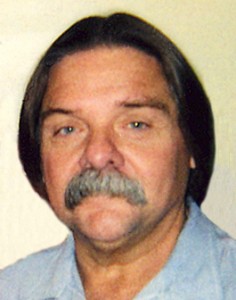
Recently, a friend (on the outside) asked how someone in prison keeps from “going crazy” after spending a significant amount of time behind bars. “What do you do to help pass the time?” he asked. That question has been asked countless times and my answer is always the same. Keep busy, I tell them. The next question is, “how do you stay busy?” How a prisoner stays occupied is relative to his or her surroundings, what prison they are in.
For example, prisoners in a higher-level facility, such as a Level IV prison (an institution’s “level” reflects the security requirements of the prisoners within it, are restricted to basic or no programs at all. School, minimal yard activities, handball and some library access (when they’re not on lockdown) keep some prisoners busy at higher-security prisons.
Lower-level institutions traditionally have more programs and activities to occupy a prisoner’s time. The prison levels range from Level IV, III, II, I, Ranch and Camp (fire Camp) to community programs in many California counties. Until the prison system became grossly overcrowded due to California’s absurd sentencing laws and political hate-mongering against all prisoners, activities such as weight-lifting, baseball, flag football, volleyball, horseshoes and many arts programs (art, music, writing, etc.) were throughout the prison system.
The public was led to believe that these time-consuming alternatives to violent activities and events were “catering to” or “coddling” prisoners. What an asinine and inaccurate assertion that is. Then there are the extreme right-wing weirdos who falsely propagate that all these rehabilitative programs and indulgences were allowing convicts to “have too much fun.”
It’s a known and proven fact that the more positive programs allowed behind prison walls (at all levels), the less violence and tumult within. When the weights (“iron”) were removed from all prisons in the mid-late 1990s, the Department of Corrections took away the most useful tool used by prisoners to vent stress and anxiety. Organized sport and music activities were positive alternatives that gave prisoners the opportunity to interact with others.
Many of these men were proud of their accomplishments after participating and would write letters to friends and family about it. There were awards handed out (certificates, letters, small trophies, etc.) and small articles with a photo appeared in the prison’s newspaper (which also have been terminated, save for one at San Quentin, I believe).
Many of these activities not only allowed dozens of men to participate, but it was also a great source of entertainment for hundreds of other prisoners who would otherwise have nothing to do. Many of the old school guards said it “made their job easier” because everyone was in one spot watching the game or concert. Easier to observe they say. There is truth to that line from the movie A Field of Dreams, that “if you build it (allow sports/arts programs) they will come.”
By removing or drastically reducing these activities, you remove the opportunity for countless men and women to actively partake in programs that prison officials spew to the public about how they want to “rehabilitate” prisoners. Just as the Department of Corrections was picking the prison system’s bones clean of helpful rehabilitative programs, they were stitching the word “Rehabilitation” on the arm patches of its guards’ uniforms, as the new prison system’s logo became the “California Department of Corrections and Rehabilitation (CDCR).”
Had my friend asked me 10–15 years ago, I could have told him a dozen or more ways how we stayed busy in prison. I can’t do that any more. The real blow to me personally is the termination of the arts programs. The remaining Arts in Corrections (AIC) programs are being shut down throughout the state. The AIC at the California Correctional Center in Susanville was eliminated at the end of 2009. The closest answer I could get as to why the program was being dumped was that there was no funding.
There are funds that the CDCR does not want to talk about. The massive prison system sucks money out of prisoners via vendor sales, through handicraft purchases and sales and other methods. This money (millions) has gone into an Inmate Welfare Fund (IWF). Some years ago, back in the 1990s I believe, the IWF was conveniently melded into the prison system’s “general interest fund,” making the IWF money (designated to benefit prisoners’ sports, arts and education, etc.) available to use for anything prison officials want to waste it on. The Department of Corrections squanders and diverts IWF money to matters non-related to the benefit or “welfare” of prisoners. You’ll have a hard time convincing the prisoner population in California that the funds from the IWF/general interest coffer is for their benefit.
If you want to stay “busy” inside the prison system you literally have to take it upon yourself to come up with a game plan that will best suit you and your needs. There are some opportunities (very few) left to take advantage of. Many prisoners immerse themselves in self-help or correspondence programs while others hone their artistic skills. Prisoners also read, write letters, play table games, exercise or walk in perpetual circles on the prison yard. It’s up to the individual how he practices being busy. There’s not much left for us to do.
